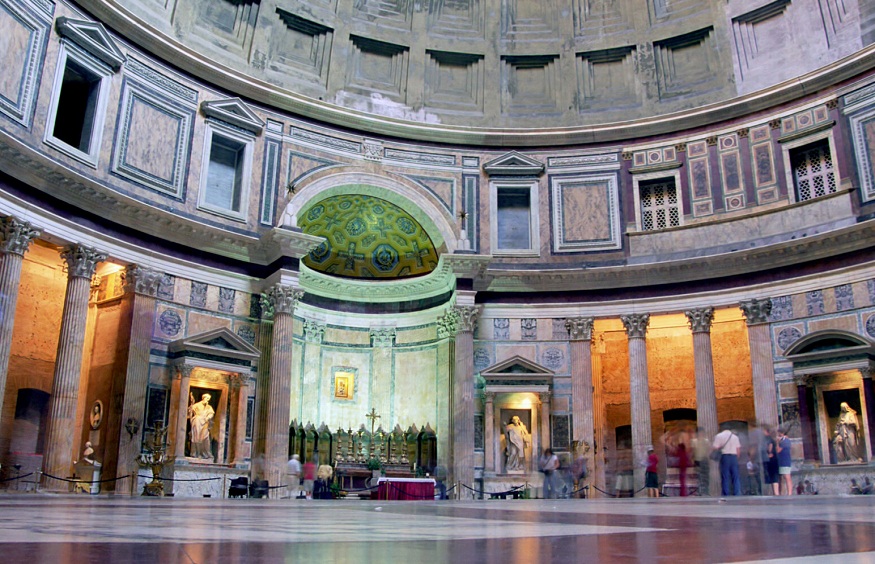
Pantheon Tickets: A Complete Guide to Visiting Rome’s Iconic Landmark
Introduction
The Pantheon, one of Rome’s most well-preserved ancient structures, is an architectural masterpiece and a must-see destination for visitors to the Eternal City. This iconic monument has stood the test of time for nearly two millennia and continues to inspire awe with its grandeur, history, and significance. Whether you are a first-time traveler to Rome or a seasoned explorer, purchasing Pantheon tickets and understanding the best way to experience this extraordinary site is essential. In this guide, we will delve into everything you need to know about Pantheon tickets, including ticket types, prices, booking options, and insider tips to enhance your visit.
History and Significance of the Pantheon
A Brief Overview of the Pantheon’s History
The Pantheon was originally commissioned by Marcus Agrippa around 27 BCE, but it was Emperor Hadrian who reconstructed the building in its current form between 118 and 125 CE after the original structure was damaged by fire. The Pantheon’s name, derived from the Greek words “pan” (all) and “theos” (gods), suggests that it was originally intended as a temple for all the Roman gods. Today, it stands as one of the best-preserved monuments from ancient Rome and has served various roles over the centuries, including as a Christian church, which helped ensure its survival.
Architectural Marvel
The Pantheon is famed for its architectural ingenuity, particularly its massive dome, which remains the world’s largest unreinforced concrete dome. At the center of the dome is the oculus, a 9-meter-wide opening that lets in light and adds to the sense of majesty inside the building. The dome’s perfect symmetry and the intricate details of the structure continue to inspire architects and artists worldwide. This historical and architectural significance makes the Pantheon one of the most important monuments in the world, attracting millions of visitors every year.
Why Visit the Pantheon?
Cultural and Historical Importance
Visiting the Pantheon offers a chance to step back in time and experience a piece of ancient history. The building’s preservation is remarkable, allowing visitors to view the Pantheon much as it was in antiquity. In addition, the Pantheon serves as the final resting place of several important historical figures, including the Renaissance artist Raphael and the first king of unified Italy, Victor Emmanuel II. As a result, it is not just a place of architectural beauty, but also a site of significant cultural heritage.
Free Entry or Paid Ticket? The New Regulations
For many years, the Pantheon was free to enter, which added to its popularity as a top destination for both tourists and locals. However, in 2023, the Italian Ministry of Culture introduced a paid ticket system to help manage the large number of visitors and fund the building’s maintenance. While some groups, such as residents of Rome, children under 18, and certain religious services, may still enter for free, most visitors will need to purchase a ticket to gain access.
Pantheon Ticket Types and Prices
General Admission Tickets
General admission tickets to the Pantheon are now required for most visitors. These tickets provide access to the interior of the Pantheon, where you can admire the breathtaking dome, the marble floors, and the chapels that house tombs of historical figures.
- Cost: The standard adult ticket costs approximately €5.00.
- Reduced Tickets: Reduced tickets are available for EU citizens aged 18-25 and typically cost around €2.00.
- Free Entry: Children under 18, residents of Rome, and certain groups such as clergy members attending religious services are eligible for free entry.
Skip-the-Line Tickets
Given the popularity of the Pantheon, long lines can form, especially during peak tourist seasons. Skip-the-line tickets offer a convenient way to bypass the queues and gain quicker access to the monument.
- Cost: Skip-the-line tickets typically cost around €10.00.
- Best For: Visitors who want to maximize their time and avoid standing in long lines should consider this option.
Guided Tours and Audio Guide Tickets
For those looking to learn more about the history and architecture of the Pantheon, guided tours and audio guide tickets are available. These provide a deeper understanding of the building’s significance and allow you to appreciate its details more fully.
- Cost: Guided tours usually range from €15.00 to €25.00, depending on the tour provider.
- Audio Guides: Audio guides are available for around €5.00, offering an informative self-guided experience in multiple languages.
Combo Tickets
Many visitors choose to explore other nearby attractions along with the Pantheon. Combo tickets allow access to multiple sites in Rome, such as the Colosseum, Roman Forum, and Palatine Hill, along with the Pantheon.
- Cost: Combo tickets generally start at €30.00, depending on the attractions included.
- Advantages: These tickets offer great value for those who want to visit multiple historical landmarks in a single trip.
Where to Buy Pantheon Tickets
Online Ticket Booking
The easiest and most convenient way to purchase Pantheon tickets is online. Various platforms and the official Pantheon website offer the option to buy tickets in advance. Booking online allows you to avoid long lines at the ticket office and secure your entry time.
- Official Website: Tickets can be purchased directly from the Pantheon’s official website. This ensures that you are buying from a reliable source, and the prices are the same as at the ticket office.
- Third-Party Vendors: Other websites, such as Viator and GetYourGuide, offer tickets along with optional add-ons like guided tours or skip-the-line access.
On-Site Ticket Purchase
Visitors can also buy tickets on-site at the Pantheon, but this option is not recommended during peak tourist seasons due to the long wait times. If you choose to purchase tickets at the entrance, be prepared to wait in line.
Best Time to Visit the Pantheon
Early Morning Visits
The best time to visit the Pantheon is early in the morning, shortly after it opens at 9:00 AM. Arriving early allows you to avoid large crowds and experience the building in a more peaceful setting. The morning light filtering through the oculus also creates a magical atmosphere inside.
Late Afternoon or Evening Visits
Another good time to visit is late in the afternoon, especially during the golden hour when the sun is setting. The warm light enhances the beauty of the interior, and there tend to be fewer crowds later in the day.
Avoiding Peak Hours
To avoid large crowds, try to avoid visiting the Pantheon between 11:00 AM and 2:00 PM, which is when the majority of tour groups tend to arrive. Weekends and holidays are also busier, so visiting on a weekday will provide a more relaxed experience.
Tips for Visiting the Pantheon
Respect the Religious Nature of the Pantheon
Though the Pantheon is a major tourist attraction, it is also an active church, known as the Basilica of St. Mary and the Martyrs. As such, visitors should dress modestly and behave respectfully inside. Keep in mind that mass is held regularly, and visitors may not be allowed to tour the building during religious services.
Photography Tips
The Pantheon is a photographer’s dream, with its stunning architectural details and play of light and shadow. However, flash photography and tripods are not allowed inside, so plan accordingly. The best shots can be captured by taking advantage of the natural light streaming through the oculus or focusing on the intricate details of the marble floors and columns.
Take Your Time Inside
Although the Pantheon is not as large as some of Rome’s other monuments, it is worth taking your time to fully appreciate its beauty. Spend a few minutes observing the ceiling, the oculus, and the way the light moves across the space. Look closely at the inscriptions, sculptures, and chapels around the perimeter of the building to get a deeper sense of its history.
How to Get to the Pantheon
By Public Transportation
The Pantheon is located in the heart of Rome and is easily accessible by public transportation. The closest metro station is Barberini (Line A), which is about a 10-15 minute walk from the Pantheon. Several bus lines, including 30, 40, 62, 64, and 87, also stop near the Pantheon, making it easy to reach from other parts of the city.
Walking from Other Attractions
Many of Rome’s top attractions are located within walking distance of the Pantheon. The Trevi Fountain, Piazza Navona, and the Spanish Steps are all less than a 15-minute walk away, making it easy to include the Pantheon in your itinerary for a day of sightseeing.
Accessibility for Visitors with Disabilities
The Pantheon is generally accessible for visitors with disabilities. There are ramps at the entrance, and the interior is spacious enough to navigate with a wheelchair. However, the floor can be uneven in places due to the ancient marble, so extra caution is advised.
Pantheon FAQ: Common Questions Answered
1. Do I need to book Pantheon tickets in advance?
It is highly recommended to book tickets in advance, especially during peak tourist seasons. Booking online ensures that you secure your desired entry time and avoid long lines at the ticket office.
2. Is there a dress code for visiting the Pantheon?
Yes, since the Pantheon is an active church, visitors are required to dress modestly. Shoulders and knees should be covered, and visitors should avoid wearing revealing clothing.
3. Are there any special events or services held at the Pantheon?
The Pantheon holds regular religious services, including mass, which are open to the public. Special events, such as weddings and concerts, are occasionally held here as well. Check the official website for information on upcoming events.
4. How long should I plan to spend at the Pantheon?
Most visitors spend about 30 minutes to an hour exploring the Pantheon. However, if you choose to take a guided tour or listen to an audio guide, you may want to allocate more time to fully appreciate the building’s history and significance.
5. Is the Pantheon included in the Roma Pass?
Yes, the Pantheon is included in the Roma Pass, a tourist card that offers free or discounted entry to various attractions in Rome. The Roma Pass also provides access to public transportation and can be a cost-effective option for visitors planning to see multiple sites.
Conclusion
The Pantheon is more than just an ancient temple; it is a symbol of Rome’s enduring legacy and a testament to the genius of Roman engineering and architecture. With its stunning dome, rich history, and status as a functioning church, the Pantheon continues to captivate visitors from around the world. By purchasing Pantheon tickets in advance, choosing the right time to visit, and taking the time to appreciate its many details, you can ensure a memorable and rewarding experience at this iconic monument. Whether you are a history buff, an architecture enthusiast, or simply a curious traveler, the Pantheon is a must-see on any Roman itinerary.





